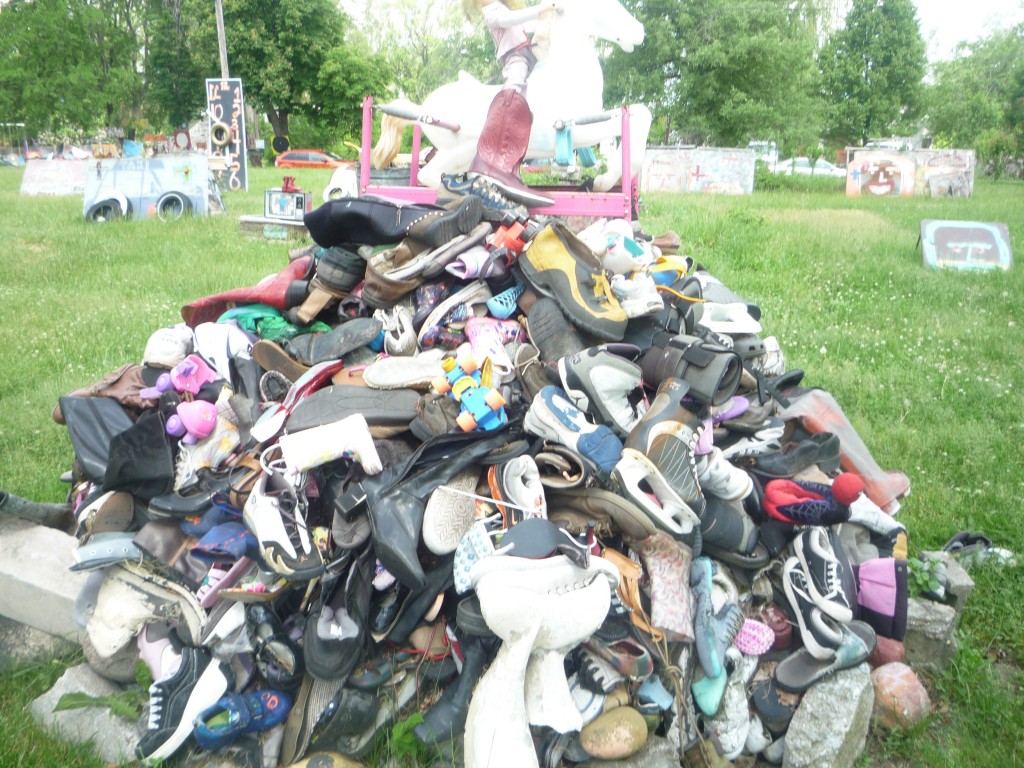
This is one of the art displays at The Heidelberg Project in Detroit. On the face of it, it’s a pile of shoes topped by a doll riding a plastic horse on springs. It’s a pile of discarded goods. Some might call it garbage. Or silliness.
But after last summer’s trip to Washington, D.C., all I could think about were its parallels to this other pile of shoes.

This is a display at the United States Holocaust Memorial Museum. Here is how the museum’s website describes it:
When Soviet troops liberated the Auschwitz-Birkenau and Majdanek camps, they discovered huge mounds of shoes, hundreds of thousands of pairs, but very few living prisoners. At the sight of these inanimate witnesses, veteran CBS News correspondent Edward R. Murrow commented, “One shoe, two shoes, a dozen shoes, yes. But how can you describe several thousand shoes?”
The 4,000 shoes displayed in the Permanent Exhibition are on loan from the State Museum of Majdanek in Lublin, Poland, and represent a tiny fraction of those found at Majdanek in 1944.
Each pair of those shoes had an owner. Each owner was murdered. But before they were murdered, the Nazis mined them for every item of monetary value: clothes, eyeglasses, hairbrushes, suitcases, shoes, even their hair. Depending on how long the Nazis had been in charge where the victim lived, the shoes would be worth barely anything, since the Nazis closed Jewish shops and then forbade Jews from shopping in non-Jew establishments, so some of those shoes might have been patched and patched again, or “resoled” with newspaper found on the street (since Jews often weren’t allowed to buy newspapers, either). And who got the task of taking apart the shoes for any usable leather? Concentration camp prisoners who hadn’t yet been killed.
In a building full of sobering images, this was one of the most striking.
And I couldn’t help but see echoes in that more colorful pile of shoes at Detroit’s Heidelberg Project. In forgotten neighborhoods like so many in Detroit, people have been discarded by their elected leaders, used as lightning rods to ramp up racial fears and to perpetuate isolation. As we’ve seen in our newsfeeds in the last couple of years, people in these neighborhoods are more likely to be killed by police officers for offenses that might get a white person in a different neighborhood a stern warning. Violence is everywhere in many forgotten neighborhoods, whether due to drugs and gangs, domestic violence, sex trafficking.
It doesn’t escape my attention that the same word is used for the narrower and narrower neighborhoods European Jews were forced into and narrower and narrower inner-city neighborhoods that poor African-Americans live in (and some have argued, were forced into by government policies): ghetto.
Their lives are as valued as a pile of discarded shoes.
Which haunts me.